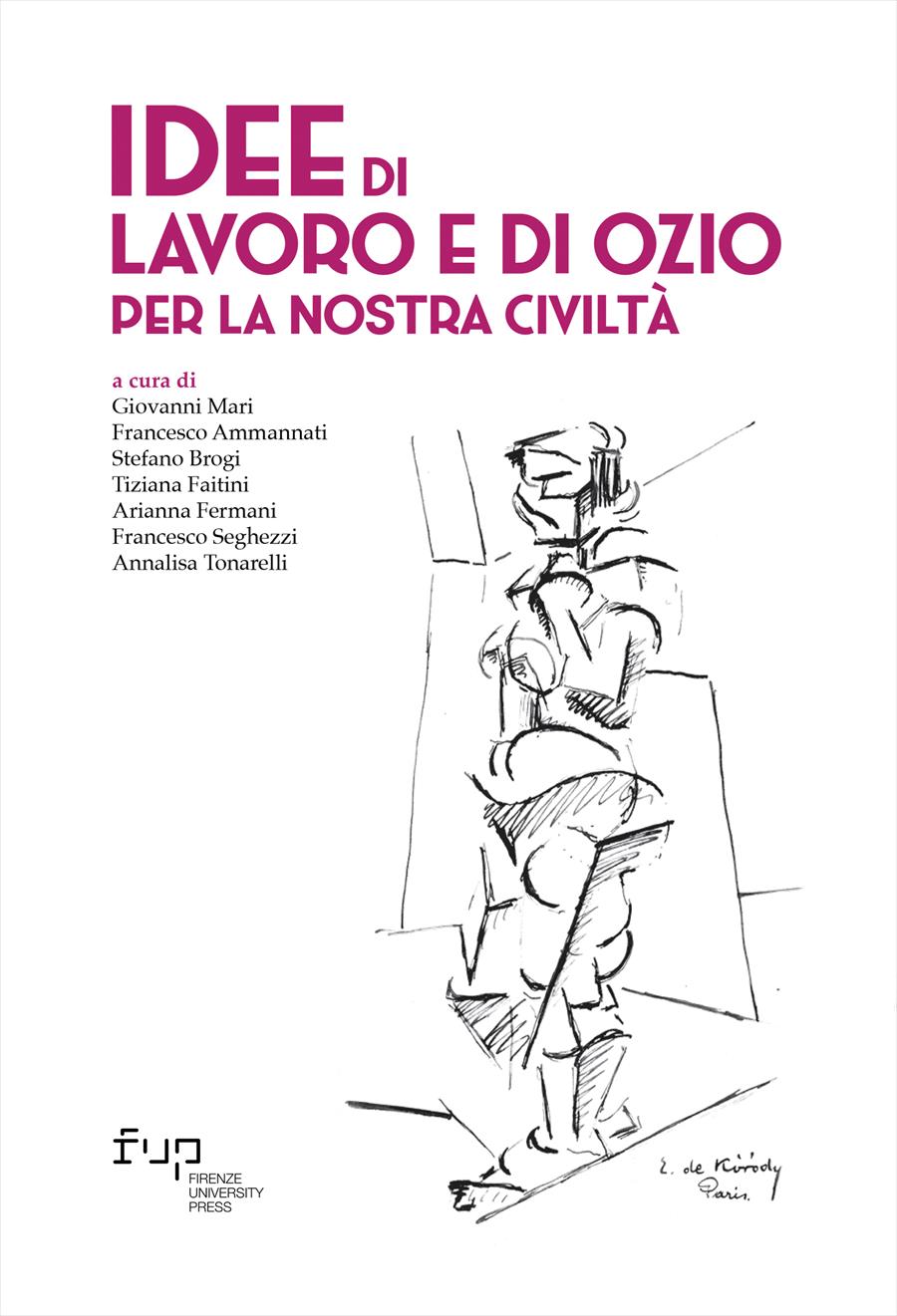- Idee di lavoro e di ozio per la nostra civiltà
- Edited by Giovanni Mari, Francesco Ammannati, Stefano Brogi, Tiziana Faitini, Arianna Fermani, Francesco Seghezzi, Annalisa Tonarelli
Il lavoro come arte: William Morris e la riscoperta del lavoro artigiano
- Matteo Colombo
- © 2024 Author(s) |
- CC BY 4.0
- DOI: 10.36253/979-12-215-0319-7.78
Work plays a central role in the reflections of William Morris. According to Morris, industrial society is based on an organization of labor that debases the human being, reduced to a machine among machines, while art and beauty are destined for a select few. This was not the case in the Middle Ages, where every craftsman was also an artist. Morris then proposes a return to the pre-industrial organizational model, based on an idea of work practical and theoretical, collaborative, creative, in order to restore dignity to workers and allow everyone to experience the beauty of art, even in the humblest of jobs and products made. The paper highlights the main theoretical nodes of the author's thought, highlighting in the conclusion its main critical issues and insights for today.
- Keywords:
- Morris,
- Arts and Crafts,
- Utopian socialism,
- Industrial society,
- Work and leisure,
ADAPT-Association for International and Comparative Studies in Labour and Industrial Relations, Italy
- Crawford, Alan. 1997. “Ideas and Objects: The Arts and Crafts Movement in Britain.” Design Issues 13, 1: 15-26.
- De Munck, Bert. 2019. “Artisans as knowledge workers: Craft and creativity in a long term perspective.” Geoforum 1: 227-37.
- Epstein, Stephan R. 1998. “Craft Guilds, Apprenticeship, and Technological Change in Preindustrial Europe.” The Journal of Economic History 3: 684-713.
- Gauvin, Jean-Francois. 2006. “Artisans, machines, and Descartes’s Organon.” History of Science 44, 2: 187-216.
- Gnugnoli, Alberta. 2014. William Morris. Art e Dossier. Firenze: Giunti.
- King, Andrew. 2008. “William Morris Arts & Crafts Aesthetic Rhetoric.” American Communication Journal 10 (S): 1-10.
- Kinna, Ruth. 2000. “William Morris: Art, Work, and Leisure.” Journal of the History of Ideas 61, 3: 493-512.
- Krugh, Michele. 2014. “Joy in Labour: The Politicization of Craft from the Arts and Crafts Movement to Etsy.” Canadian Review of American Studies/Revue canadienne d’études américaines 44, 2: 281-301.
- Morris, William. 1888. “The Revival of Handicraft.” Fortnightly Review, Novembre, 1888.
- Morris, William. 1894. “How I Became a Socialist.” Justice, 16 Giugno, 1894.
- Morris, William. 1963 (1883). Architettura e Socialismo. Bari: Laterza.
- Morris, William. 1969 (1884). “Art and Labour.” In Unpublished Lectures of William Morris, edited by Eugene LeMire, 94-115. Detroit: Wayne State University Press.
- Morris, William. 2012 (1882). Paure e speranze sul futuro dell’arte, traduzione di Cristina Colla. Parma: Nuova Editrice Berti.
- Morris, William. 2012 (1888). Il sogno di John Ball, traduzione di Vanni de Simone. Milano: Bevivino Editore.
- Morris, William. 2021 (1890). Notizie da nessun luogo, traduzione di Elisa Frassinelli. Massa: Edizioni Clandestine.
- Ogilvie, Sheilagh. 2019. The European Guilds. An economic Analysis. Princeton: Princeton University Press.
- Polanyi, Michael. 2009 (1966). The Tacit Dimension. Chicago: University of Chicago Press.
- Sennett, Richard. 2008 (1997). L’uomo artigiano. Milano: Feltrinelli.
- Smith, Adam. 1975 (1776). An Inquiry into the Nature and Causes of the Wealth of the Nations. Oxford: Oxford University Press.
- Faulkner, Peter. 1980. Against the Age: an Introduction to William Morris. Londra: George Allen & Unwin.
- MacCarthy, Fiona. 1994. William Morris: A Life for Our Time. Londra: Faber & Faber.
- Morris, William. 2009 (1894). Lavoro utile, fatica inutile. Bisogni e piaceri della vita, oltre il capitalismo. Traduzione di David Scaffei. Roma: Donzelli Editore.
- Thompson, Edward Palmer. 1955. William Morris: Romantic to Revolutionary. Londra: Lawrence & Wishart.
Chapter Information
Chapter Title
Il lavoro come arte: William Morris e la riscoperta del lavoro artigiano
Authors
Matteo Colombo
Language
Italian
DOI
10.36253/979-12-215-0319-7.78
Peer Reviewed
Publication Year
2024
Copyright Information
© 2024 Author(s)
Content License
Metadata License
Bibliographic Information
Book Title
Idee di lavoro e di ozio per la nostra civiltà
Editors
Giovanni Mari, Francesco Ammannati, Stefano Brogi, Tiziana Faitini, Arianna Fermani, Francesco Seghezzi, Annalisa Tonarelli
Peer Reviewed
Number of Pages
1894
Publication Year
2024
Copyright Information
© 2024 Author(s)
Content License
Metadata License
Publisher Name
Firenze University Press
DOI
10.36253/979-12-215-0319-7
ISBN Print
979-12-215-0245-9
eISBN (pdf)
979-12-215-0319-7
eISBN (epub)
979-12-215-0320-3
Series Title
Studi e saggi
Series ISSN
2704-6478
Series E-ISSN
2704-5919
